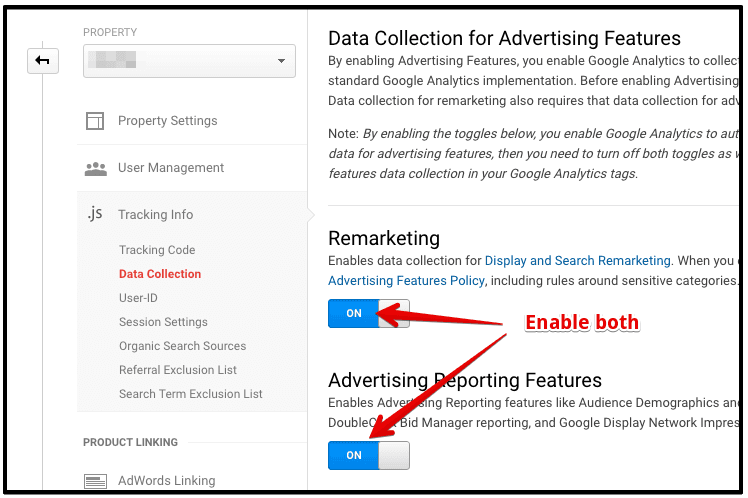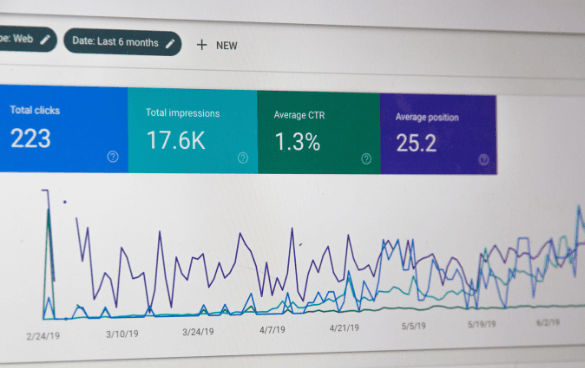Reliable Techniques for Remarketing in Google Analytics
In the world of electronic advertising and marketing, the realm of remarketing in Google Analytics stands as an essential device for services aiming to improve their online visibility and conversion rates. Through critical target market segmentation, tailored remarketing listings, and appealing ad creatives, companies can craft customized campaigns that reverberate with their target audience. The real success lies in the capacity to constantly refine and optimize these approaches based on efficiency metrics and data insights. By discovering the subtleties of dynamic remarketing and leveraging innovative monitoring devices, organizations can unlock the full capacity of their remarketing initiatives, resulting in raised brand exposure and customer interaction.
Audience Division
Making use of audience segmentation is a pivotal method in optimizing the efficiency of remarketing campaigns within Google Analytics. By separating your target market into distinctive teams based on their habits, demographics, or passions, you can customize your advertising messages to be extra interesting and pertinent. This method permits you to provide tailored advertisements to specific sectors, boosting the chance of conversion.

Additionally, target market segmentation aids you understand the differing demands and choices of different client groups, enabling you to craft even more engaging ad creatives and deals. This targeted method not only boosts the effectiveness of your remarketing efforts yet additionally boosts overall project efficiency.
Establishing Remarketing Checklists
To properly implement remarketing approaches in Google Analytics, the initial step includes producing targeted remarketing lists based on particular target market interactions. Setting up remarketing checklists allows online marketers to sector their site visitors right into different classifications based on their actions, such as web pages seen, products looked for, or actions taken on the website. By specifying these sectors, marketing experts can after that produce relevant and individualized advertisements that target these particular teams, boosting the possibility of conversion.
Remarketing listings can be set up utilizing numerous criteria such as web page sees, duration of check out, details goal conclusions, or even certain events caused on the website. This level of customization enables marketing experts to customize their advertisements to match the passions and preferences of each fractional target market, causing higher interaction and conversion prices.
In addition, remarketing lists can likewise be created based upon data imported from other resources like CRM systems, permitting a lot more specific targeting. By establishing these targeted remarketing listings, marketing professionals can efficiently connect to possible consumers who have actually already revealed rate of interest in their services or products, taking full advantage of the effect of their remarketing campaigns.
Creating Compelling Ad Creatives
After segmenting web site visitors right into targeted remarketing listings based on certain target market communications, the following vital step is to craft compelling advertisement creatives that reverberate with each segmented group's choices and interests. The performance of remarketing projects heavily relies upon the capability of these advertisement creatives to catch the attention of the target market and drive them to take the preferred activity.
To develop redirected here engaging advertisement creatives, it is crucial to understand the one-of-a-kind attributes of each fractional team (What Is “Remarketing” In Google Analytics?). Customizing the messaging, visuals, and supplies to straighten with the interests and preferences of the audience can considerably boost the chances of conversion. Utilizing dynamic advertisements that immediately readjust material based on the user's habits can additionally boost the personalization of the ad experience

Monitoring Efficiency and Optimization
Reliable tracking of project performance and continual optimization are crucial aspects of effective remarketing techniques in Google Analytics. To make certain the performance of remarketing campaigns, marketing professionals have to consistently track crucial efficiency metrics such as click-through prices, conversion rates, and return on ad spend. By monitoring these metrics, marketers can gain important understandings right into the performance of their projects and identify areas for renovation.
In Google Analytics, marketing professionals can utilize devices like conversion tracking and target market division to analyze the efficiency of their remarketing projects. Conversion monitoring enables marketers to track certain actions that customers take after clicking a remarketing ad, supplying beneficial data on the effectiveness of the project in driving wanted end results. Audience division, on the other hand, enables marketers to separate their audience right into various sectors based on various requirements such use this link as demographics, habits, and passions, enabling for even more targeted and individualized remarketing initiatives.
Constant optimization is essential for making best use of the influence of remarketing campaigns. Marketing professionals need to use A/B screening to trying out different advertisement creatives, messaging, and targeting techniques to identify one of the most efficient methods. By frequently assessing project performance data and making data-driven optimizations, marketing professionals can make sure that their remarketing projects are achieving the click here to find out more preferred results and driving conversions effectively.
Leveraging Dynamic Remarketing
Making use of vibrant remarketing can significantly boost the importance and impact of targeted advertisements in Google Analytics. This advanced method allows marketers to show individualized advertisements to users who have actually previously seen their internet site or used their mobile app. By dynamically displaying products or services that the individuals have actually shown passion in, vibrant remarketing assists to maintain the brand fresh in their minds and motivates them to go back to finish a purchase.
In addition, vibrant remarketing projects can be automated and maximized in real-time based upon efficiency information, making sure that the ads remain effective and pertinent. By leveraging vibrant remarketing in Google Analytics, advertisers can produce extra impactful and targeted ad campaign that reverberate with their audience and drive outcomes.
Conclusion
To conclude, reliable remarketing methods in Google Analytics involve target market segmentation, targeted remarketing checklists, engaging advertisement creatives, efficiency surveillance, and dynamic remarketing. By concentrating on tailored advertisements, information analysis, and constant optimization, services can enhance conversion rates and drive involvement successfully. Leveraging tools like conversion tracking makes certain that advertisements continue to be personalized and pertinent, leading to total success in remarketing efforts.
Via strategic target market division, customized remarketing lists, and engaging advertisement creatives, businesses can craft tailored campaigns that resonate with their target audience. Using dynamic ads that immediately change content based on the user's actions can likewise boost the customization of the advertisement experience.
Conversion tracking allows marketing professionals to track particular actions that individuals take after clicking on a remarketing ad, supplying valuable information on the efficiency of the campaign in driving wanted outcomes.Making use of dynamic remarketing can considerably boost the importance and influence of targeted ads in Google Analytics - What Is “Remarketing” In Google Analytics?.In verdict, reliable remarketing techniques in Google Analytics involve audience division, targeted remarketing lists, engaging ad creatives, efficiency tracking, and dynamic remarketing
Comments on “Key Functions of Remarketing In Google Analytics Explained”